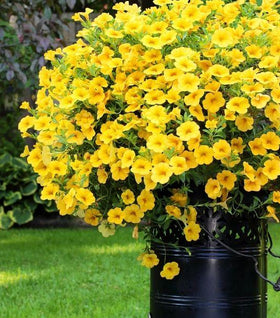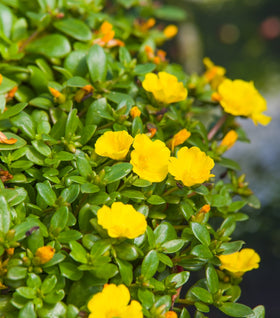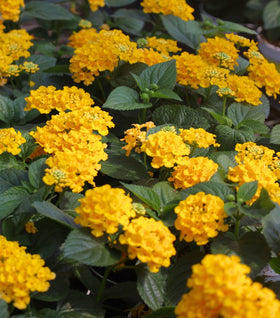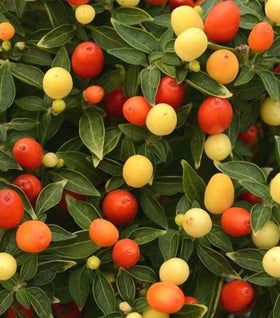Yellow Annuals for Sale Online
Most annuals are loved for their bright, showy flowers that add pizzaz to any garden. If you are looking for beautiful, sunny, and joyful-colored annuals, yellow plants are the way to go. We have options such as Petunias, Annual Geraniums, Calibrachoas, and many other miscellaneous purple annual plant options. Whether you want a hanging basket plant or mass plantings, we got you covered!
Annual plants experience an entire life cycle all in one growing season. The best time to plant annuals is in spring or early summer so they can enjoy the growing season before the first frost of the year hits. Some exceptions will set seed and reproduce the following growing season, but this is not common.
Types of Yellow Annual Plants
Calibrachoa
- Yellow Calibrachoa Plant
Lantanas
- Bandana Yellow Lantana
- Bandana Cherry Sunrise Lantana
Miscellaneous
- Portulaca Pazzaz Yellow
- Bidens Sun kiss
How to Care for Calibrachoa
Calibrachoa plants love to receive at least six full hours of sunlight each day. However, they can tolerate some shaded time of day during the warmest parts of the day. We recommend giving them as much bright sunlight as possible to help them blossom and thrive best. Plant these annuals in well-draining soil and keep them on a regular watering schedule.
How to Care for Lantanas
Lantanas love to be planted in moist, well-draining soil conditions. They are slightly drought-resistant, but only once they are well established. To know if your plant needs water, stick your finger one inch deep in the soil; if it feels dry, it is time to water. Plant your annual Lantanas in full sunlight, at least 6 to 8 hours a day. Fertilize once a month using a dry fertilizer for best growth results.
How to Care for Miscellaneous Annuals
There are a few different plant species offered for yellow annuals, and they all are unique in their ways. However, there are a few universal care tips for most plants we want to share. We recommend always planting in well-draining soil conditions to avoid any risk of root rot disease. If your plant's soil retains too much water, it could run into the possibility of root rot and become damaged. We also recommend feeding your plants once a month or maybe a bit more often (depending on the plant). However, too much fertilizer could risk the chance of burning your plant's roots. Almost all plants need some sunlight; it is best to do your research on where the perfect location in your landscape is for your plants to thrive.






